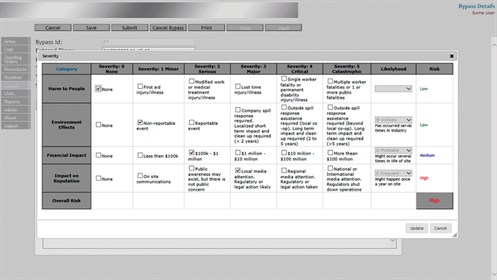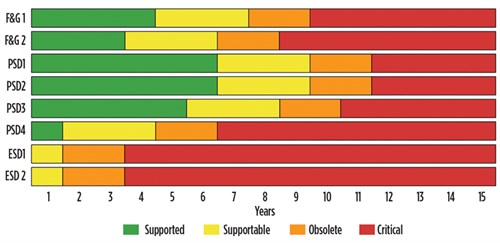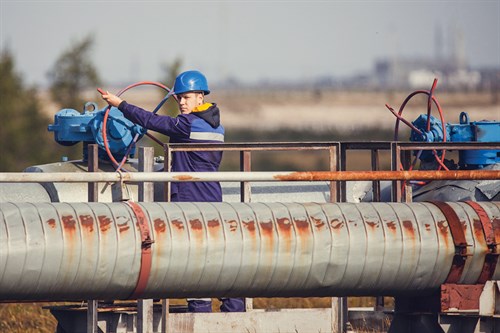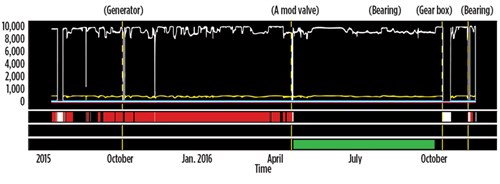Upgrade control systems to improve pipeline safety and efficiency
Pipelines remain the safest way to transport hydrocarbons. However, perceptions do not always match reality, as incidents in recent years have stoked public concerns about pipeline safety.
To help prevent incidents and maintain and enhance the safety record of pipelines, industry must address one of its most widespread opportunities: aging control systems. Many pipeline operators have old or obsolete control systems that have been in place for 20 yr–30 yr or longer. Migrating to a modern control system helps minimize risk and take advantage of new technological capabilities.
A modern control system can help enhance safety in several ways. It can assist in more quickly identifying problems, or even predict issues before they occur. It can automate certain safety activities to improve reaction time. Also, it can strengthen plant security against cyber threats.
Risks build up over time. Aging control systems can introduce significant potential risk to pipeline systems. They may not comply with new regulations that have tighter requirements in areas like security, diagnostics and leak detection. This can make operations more vulnerable to risks that have safety consequences, such as cybersecurity attacks.
Aging control systems can also make it difficult to quickly react to changes in the plant operating environment. For example, the systems use antiquated alarm strategies that can overload personnel with too much information instead of delivering alarm details to the specific person or system that needs them (FIG. 1).
 |
|
FIG. 1. State-of-the-art alarm systems go well beyond the requirements of ISA 18-2, ensuring that alarms and other notifications are centralized, analyzed and delivered directly to the work order system or to the cell phone of the individual who can correct the issue. |
Another challenge is that spare parts can be hard to come by for older and obsolete control systems. As a result, some pipeline operators resort to using auction sites like eBay to find spare parts. This practice is profoundly risky, however, because used parts from untrusted sellers can be defective or unreliable, creating safety and security risks.
Understand the risks. It may be time for many businesses to redo hazardous operations (HAZOP) and layer of protection analysis (LOPA) processes, given how much change may have happened inside and outside the business since they were last evaluated. Many factors evolve over time. These include regulations, corporate risk tolerance, the age and condition of plant systems, and even how risks are understood—all of which can affect how safety risks are assessed and mitigated (FIG. 2).
 |
|
FIG. 2. Developing and maintaining a maturity matrix for each system in a facility is a good first step to prioritizing migration to more modern control systems. |
Many pipeline operators use a third party to help facilitate the HAZOP and LOPA processes. It is important to ensure that the company is qualified for this work—e.g., having functional safety engineers who are certified by TÜV Rheinland or the ISA Security Compliance Institute. The third-party company may be able to offer additional assistance for the overall safety-enhancement project.
For example, the third party that performs the assessment could also supply control and safety systems. This can help ensure that the control equipment is deployed properly, which guarantees that the correct levels of safety are met to align with the risk assessment. Streamlining to one company also simplifies work processes.
A third party can also leverage extensive industry experience and technology expertise to help address risks. If the company can supply both safety and standard control systems, for example, integration challenges between the two systems can be avoided. The third party may also be able to help overcome space limitations by combining the two control systems into one rack or chassis. Simplified management of an upgrade project can also help minimize risk.
Improve safety and more. The control solutions implemented as part of an upgrade have the potential to enhance not only safety but also operating efficiency.
Modern, data-enabled control systems, for example, can take advantage of diagnostics and other data from valves and instruments along a pipeline. The data can be monitored to help identify imminent failures. It can also be modeled, using advanced analytics software, to predict failures days, weeks or even months in advance (FIG. 3).
 |
|
FIG. 3. Modern, data-enabled control systems can take advantage of diagnostics and other data from valves and instruments along a pipeline to help identify imminent failures. |
When an imminent or probable failure is detected, it can be addressed proactively and in a safe manner. The safety risks that often come with a failure, like damaged equipment, leaked oil or gas, or a potentially deadly fire or explosion, can be avoided. Also, repair downtime can be greatly reduced.
In one case, a pipeline operator upgraded the control systems at one of its compressor stations to a modern control system. The new system continuously collects data and gives operators instant access to real-time information and operational trends. Using alarms that are programmed to catch engine issues before failure, operators can initiate repairs ahead of a breakdown. By watching data remotely, they can designate an engine as “least available” until they resolve an issue (FIG. 4).
 |
|
FIG. 4. Modern control systems support rotating equipment anomaly detection and other forms of predictive maintenance. |
Modern control systems can also help improve capabilities like leak detection. Today’s smarter leak detection systems, using modern control systems, can listen for the sound of a pipe breaking and determine where the break occurred between multiple sites. Other systems can use fiber optic cables that run alongside a pipeline to detect disturbances caused by leaks. Both of these approaches can help detect leaks faster and pinpoint their locations more accurately than traditional systems that look for imbalances between pipeline inputs and outputs.
Finally, modern control systems with built-in cybersecurity features can help keep pipelines safe from malicious attacks and unintentional interference. These features, for example, allow for the encryption of transmitted data to ensure that people who log in are authorized to do so.
A dramatic upgrade. After decades of use, aging control systems may no longer meet reliability, safety and security needs. Modern control systems can help bring sites to compliance with today’s more stringent regulations, thereby reducing risk. These systems also allow the power of greater connectivity and data analysis to be harnessed, enabling significant change in pipeline operations. GP
 |
Ross Otto focuses on pipeline control and optimization as an Engineering Manager at Sensia, a JV between Rockwell Automation and Schlumberger. Previous to this, he was a Technical Specialist and Program Manager for Rockwell Automation. Before coming to the automation world, Mr. Otto spent many years designing and delivering pipeline SCADA, leak detection and optimization systems. With more than 30 yr in the business, he is a trusted source for pipeline safety automation in the oil and gas industry.




Comments